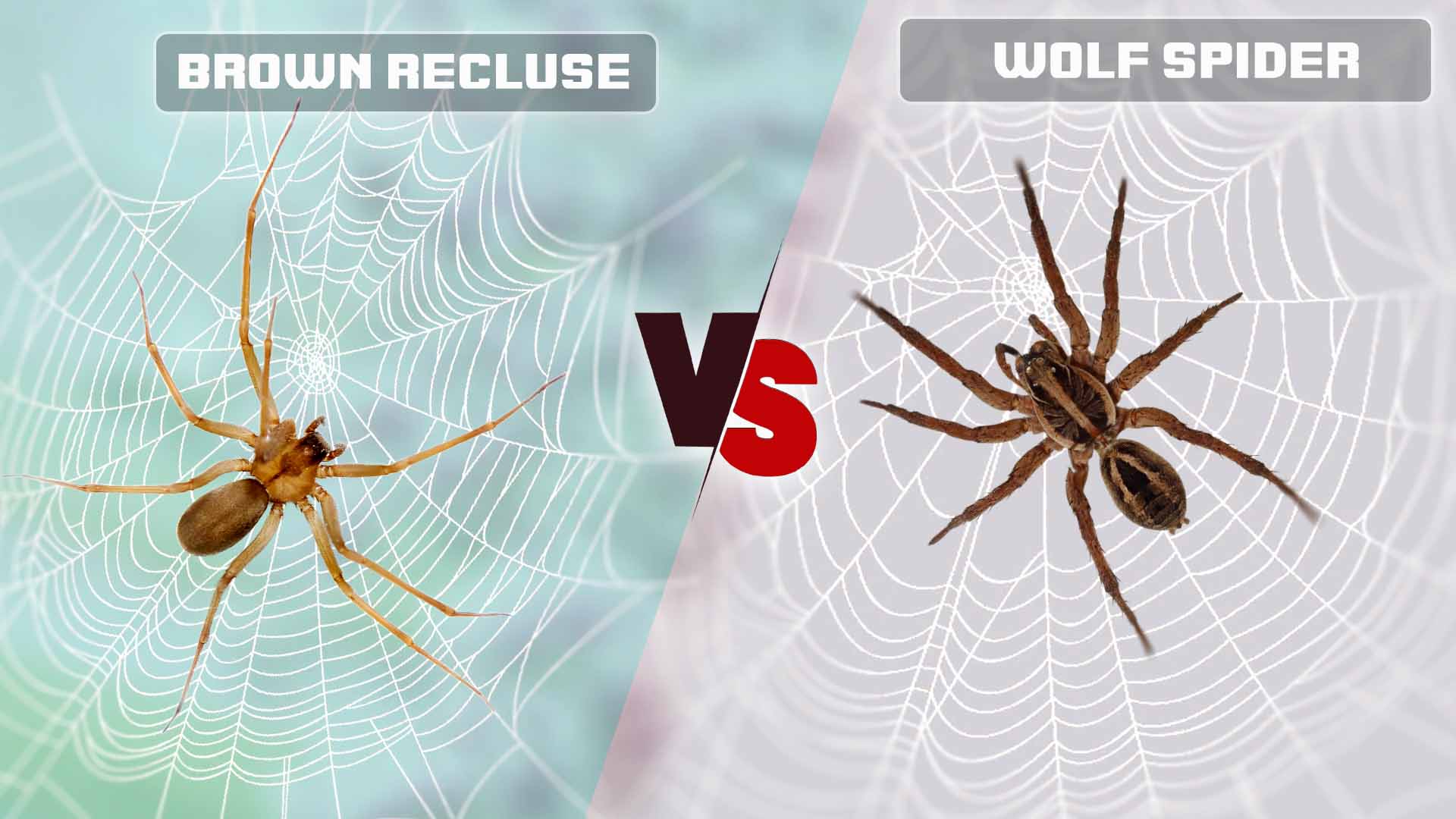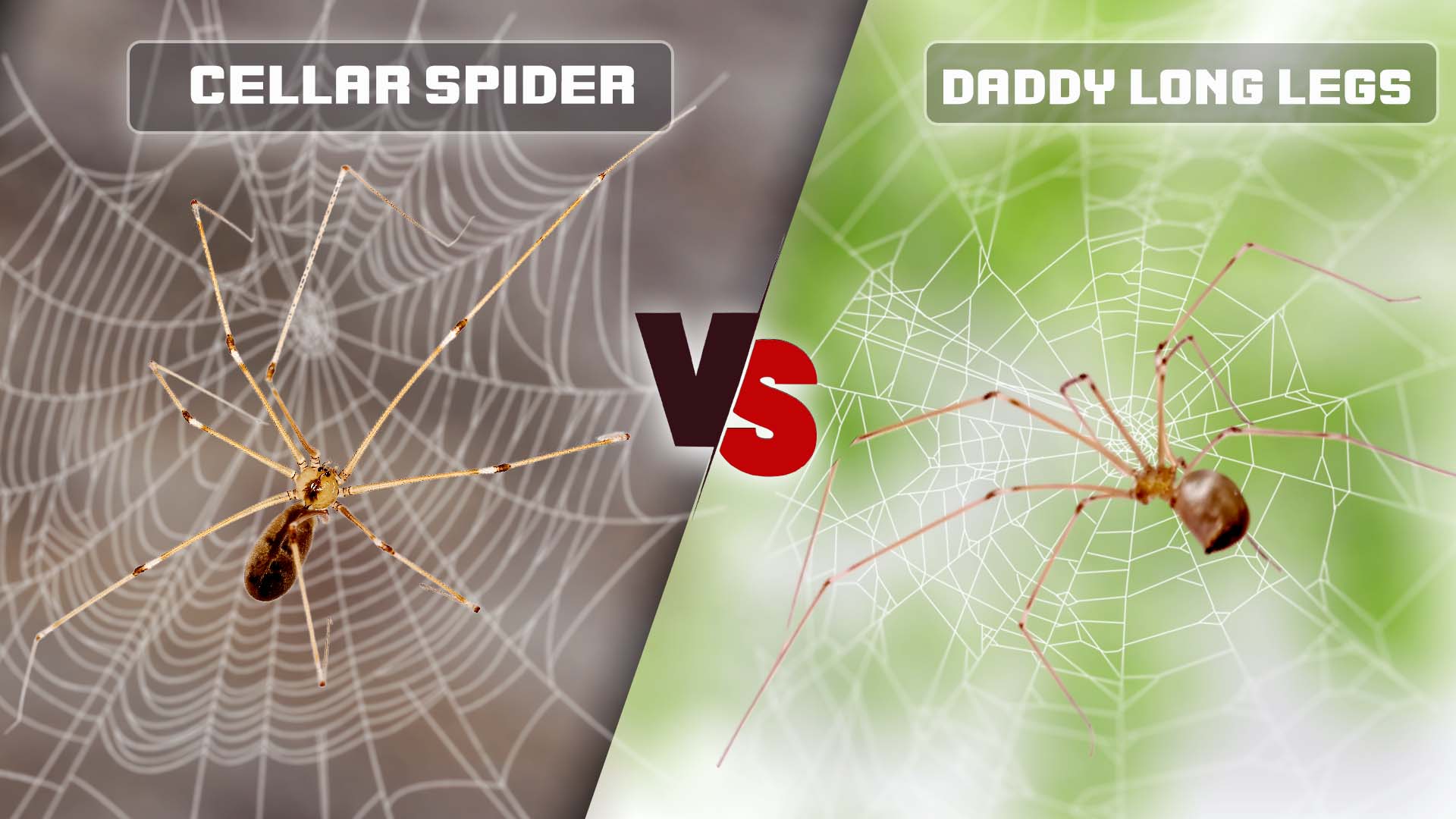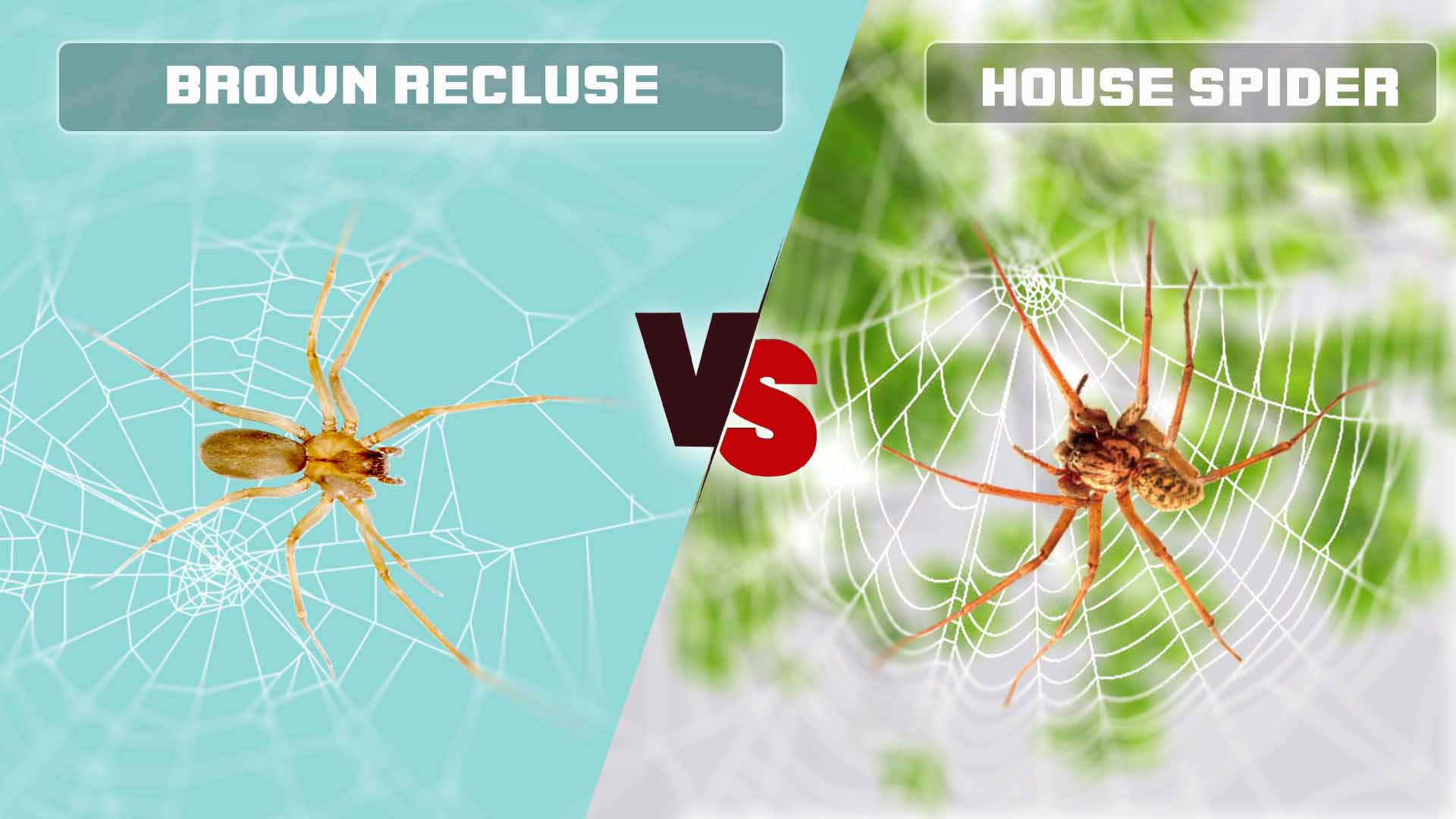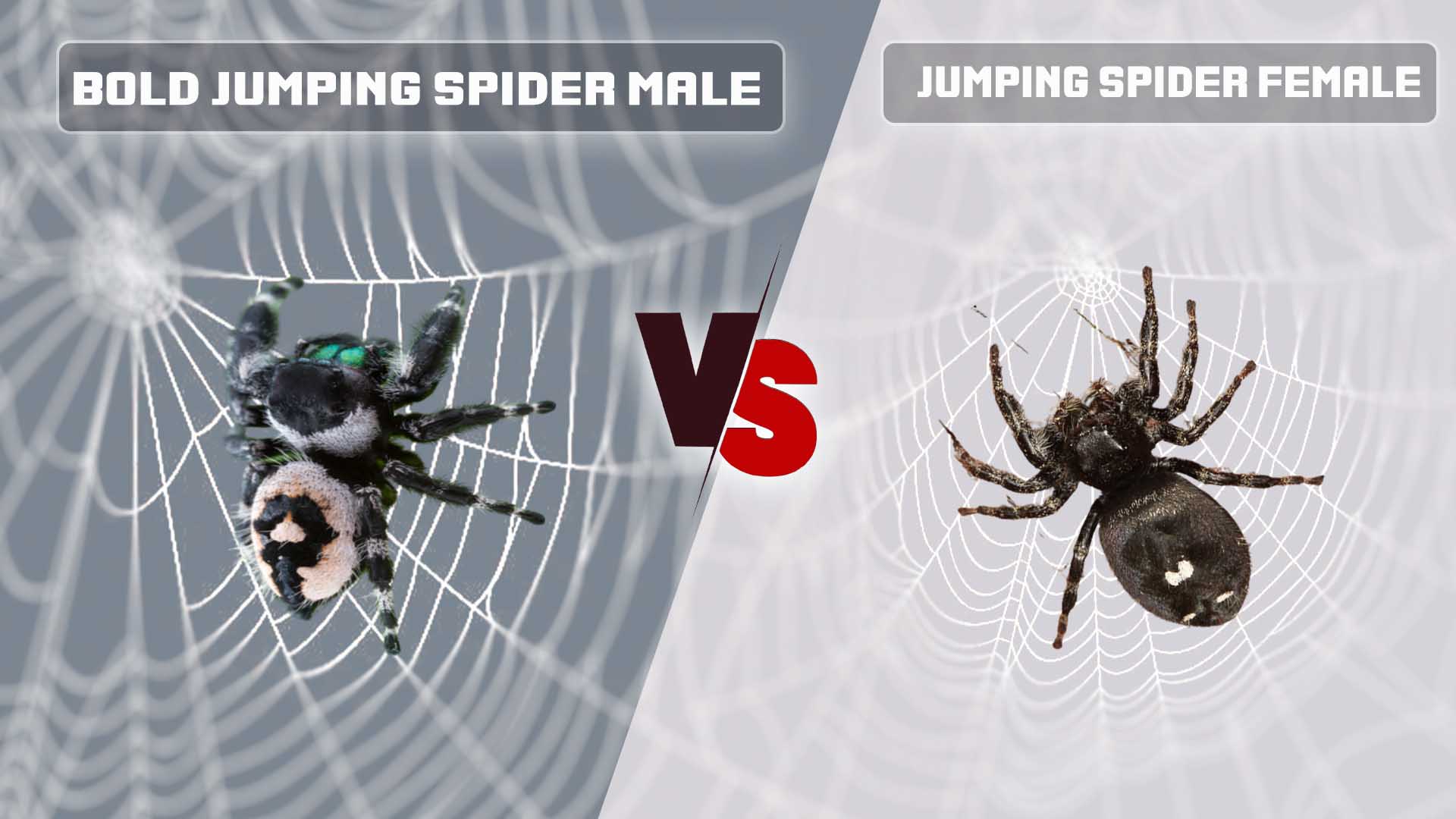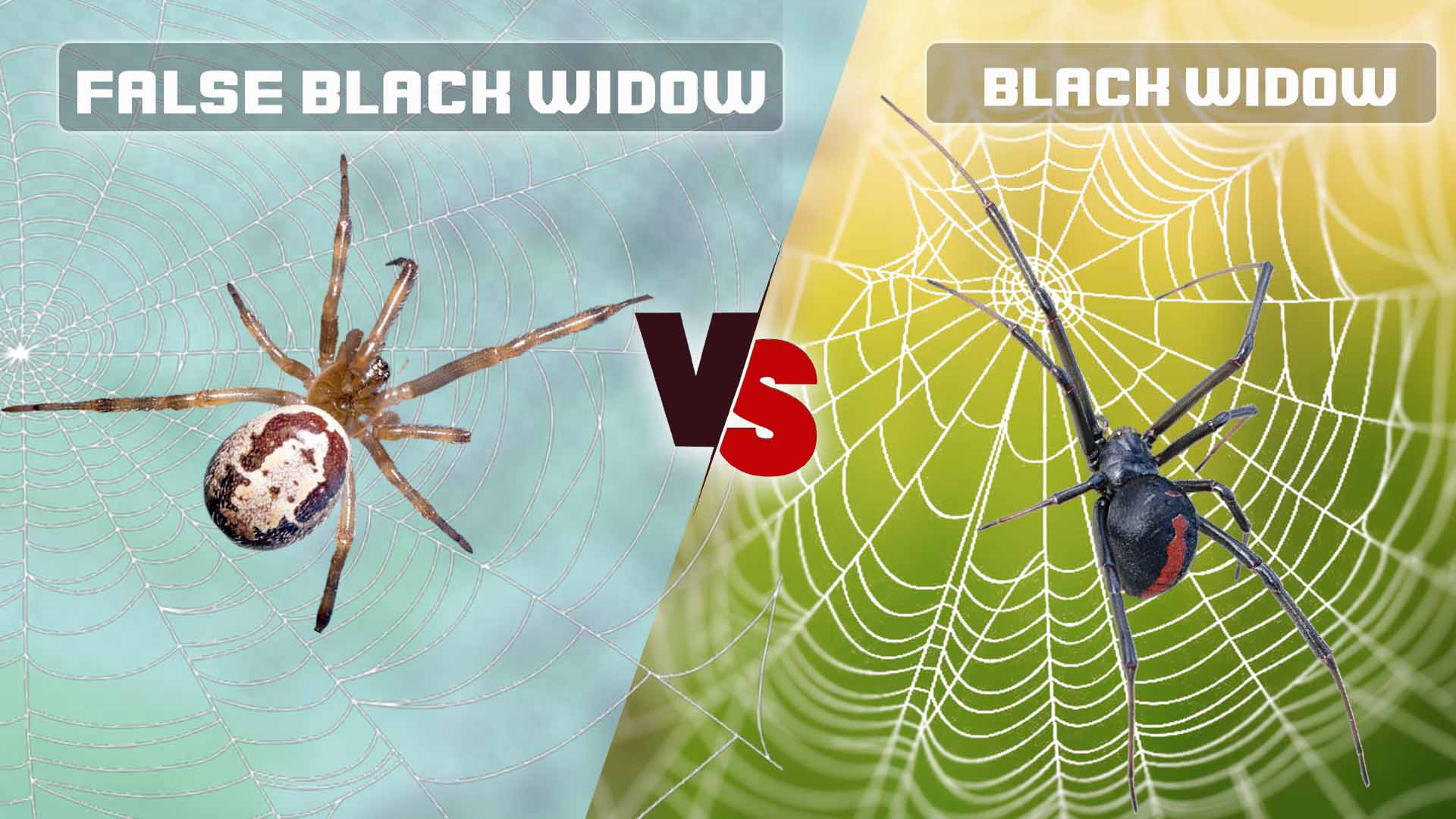Spiders, the enigmatic arachnids that share our living spaces, often invoke a sense of fascination and fear. Among the many species, the Brown Recluse and Wolf Spider stand out due to their distinctive characteristics and potentially harmful bites.
In this article, we will delve into the intricate details that set these two species apart, examining their appearance, eye arrangement, leg structure, coloration and markings, web type and location, behavior, lifespan, and geographical distribution.
Differences Between Brown Recluse vs Wolf Spider
here’s a table summarizing the differences between the Brown Recluse and Wolf Spider:
| Aspect | Brown Recluse | Wolf Spider |
| Appearance | Small (6-20 mm), violin-shaped mark | Larger (10-35 mm), robust body, stout legs |
| Eye Arrangement | Six eyes in triad formation | Eight eyes in three rows |
| Leg Structure | Slender legs, less hair | Robust, hairy legs for chasing prey |
| Coloration and Markings | Light to medium brown, violin mark | Varied colors, patterns, stripes |
| Web Type and Location | Irregular, messy retreat webs | No intricate webs, ground-dwelling hunters |
| Behavior | Nocturnal, reclusive | Diurnal, active, may exhibit aggression |
| Lifespan | 1-2 years | About a year |
| Distribution | Females are slightly larger, more aggressive | Global distribution |
| Male and Female Traits | Females are larger, and carry egg sacs, males wander | Females are larger and carry egg sacs, while males wander |
| Bite Characteristics | Necrotic effects on human tissue | Painful but generally less harmful |
Appearance
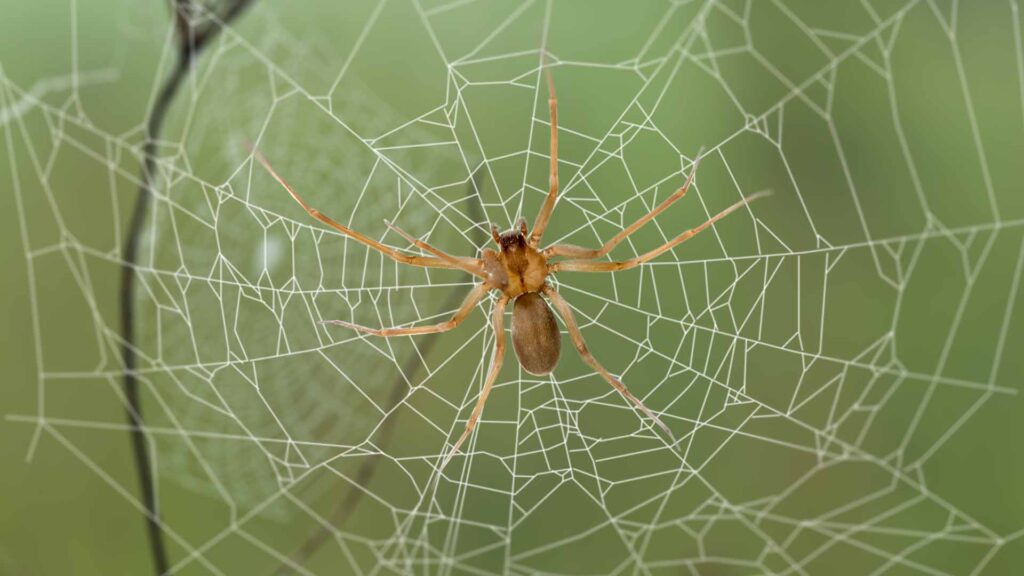
The Brown Recluse (Loxosceles recluse) and the Wolf Spider (Lycosidae family) exhibit noticeable differences in their overall appearance. The Brown Recluse is relatively small, ranging from 6 to 20 millimeters in body length. It has a violin-shaped marking on its cephalothorax, giving it the nickname “fiddle back spider.” In contrast, the Wolf Spider is generally larger, with body lengths varying from 10 to 35 millimeters. Its robust body shape, along with its stout legs, aids in its hunting prowess.
Eye Arrangement
Eye arrangement is a crucial feature for distinguishing between these two spiders. Brown Recluses possess six eyes arranged in pairs, with a distinctive triad formation: two eyes in front, two on the sides, and two smaller eyes slightly behind the main pairs. Wolf Spiders, on the other hand, have eight eyes arranged in three rows: four small eyes on the bottom row, two larger eyes in the middle row, and two medium-sized eyes on the top row.
Leg Structure
The leg structure of these spiders can also aid in their identification. Wolf Spiders are known for their robust and hairy legs, which are adapted for chasing and capturing prey. These spiders are agile hunters, relying on their strong legs to pounce on insects. Brown Recluses have comparatively slender legs that lack the same dense hair covering, indicating a less agile hunting strategy.
Coloration and Markings
Both spiders exhibit distinct coloration and markings that aid in differentiation. Brown Recluses, as the name suggests, are typically light to medium brown in color with a darker brown violin-shaped mark on their cephalothorax. Wolf Spiders display a range of colors, including gray, brown, or even black, often with various patterns and stripes on their bodies. These markings contribute to their camouflage as they move across a variety of surfaces.
Web Type and Location
Perhaps one of the most significant distinctions between these two species is their web-building behavior. Brown Recluses are known for their irregular, messy, and off-white silk webs, which they use as retreats and egg sacs. They prefer secluded locations like closets, attics, and basements. On the contrary, Wolf Spiders do not build intricate webs for prey capture. Instead, they are ground-dwelling hunters that actively chase down their prey. They may construct silk retreats in burrows or under rocks but do not rely on webs for hunting.
Behavior Differences
The behavioral differences between these spiders are stark. Brown Recluses are reclusive, as their name suggests, and are primarily nocturnal. They prefer dark and quiet spaces, avoiding human interaction whenever possible. Wolf Spiders are more active and visible during the day, hunting their prey on the ground. They are not as shy as Brown Recluses and are known to exhibit aggressive behavior when threatened.
Lifespan Differences
The lifespan of these spiders varies, with Brown Recluses typically living for about 1 to 2 years. Wolf Spiders have a slightly shorter lifespan, usually living for a year or less. Their lifecycles include multiple molts before reaching maturity, with females often living longer than males. There are other differences between Brown Recluse Spider vs Hobo Spider.
Geographical Distribution
Brown Recluses are commonly found in the United States, particularly in the central and southern regions. They thrive in warm and dry climates, and their bites can have necrotic effects on human tissue. Wolf Spiders, on the other hand, have a global distribution, with various species inhabiting different parts of the world. They can be found in diverse habitats, from forests to grasslands, and their bites, though painful, are not typically as harmful as those of Brown Recluses.
Wolf Spider Male and Female
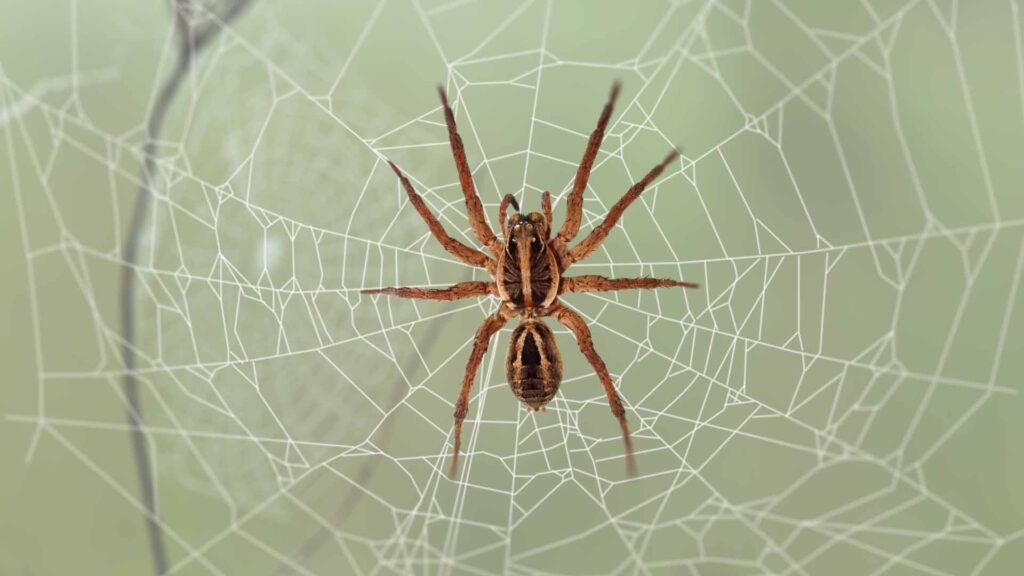
Male and female Wolf Spiders can be differentiated by their size, with females generally being larger. Female Wolf Spiders carry their egg sacs attached to their spinnerets, and the young spiderlings ride on her back until they are ready to disperse. Males are often seen wandering in search of females during mating season.
Conclusion
While both the Brown Recluse and Wolf Spider may evoke concerns due to their potential bites, they exhibit notable differences in terms of appearance, eye arrangement, leg structure, coloration and markings, web behavior, behavior, lifespan, and distribution. Understanding these differences is essential for accurately identifying these spiders and dispelling any unnecessary fears they may evoke.

